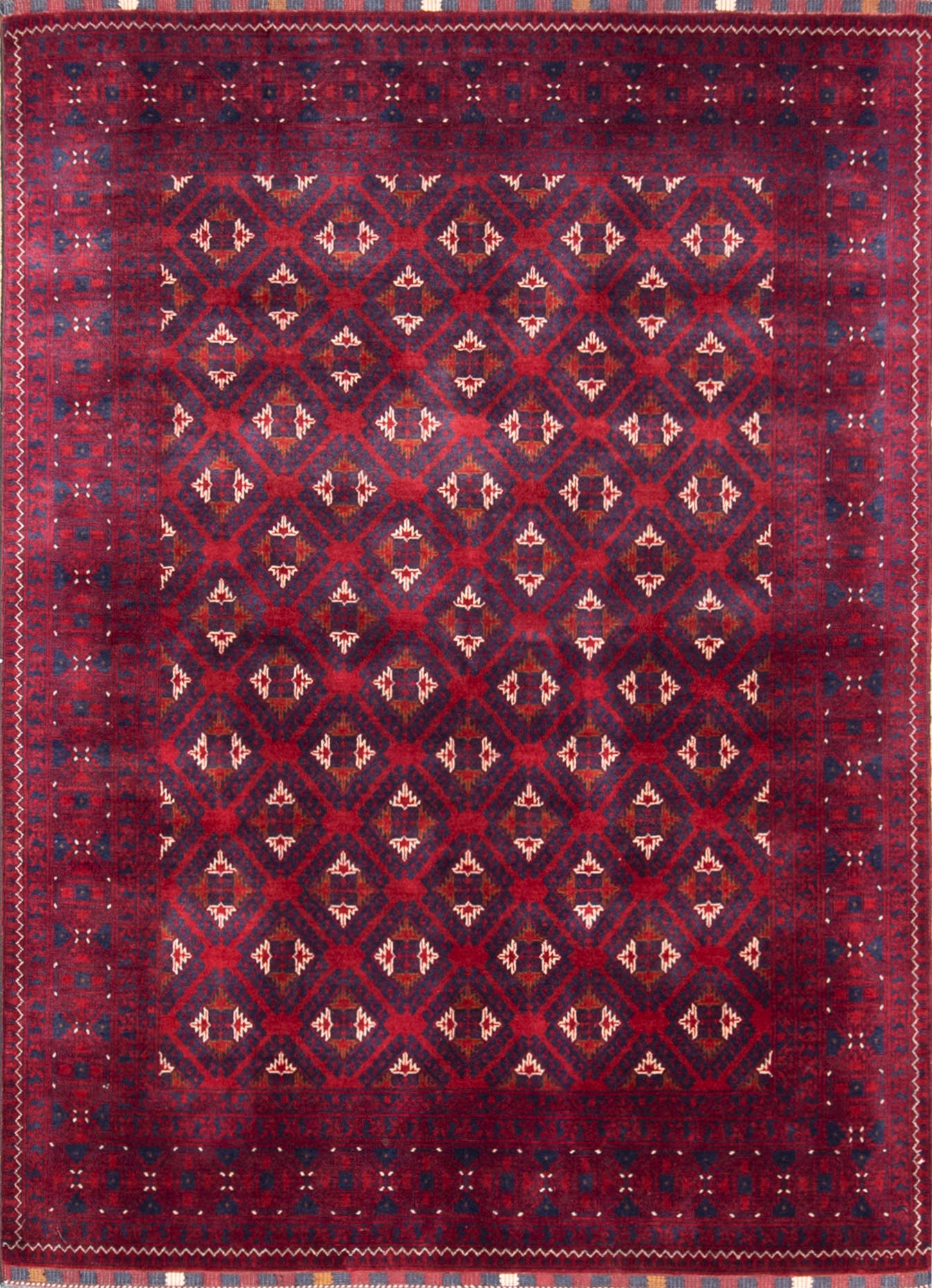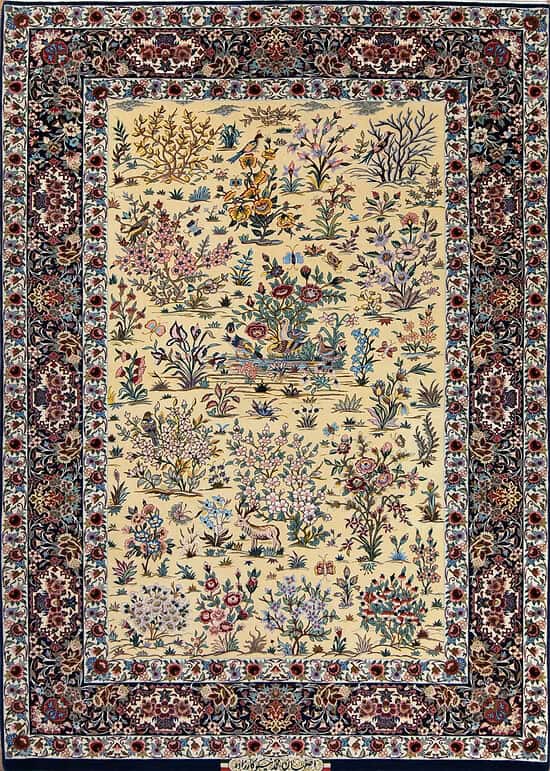You’ve just found the perfect rug—the one that ties your living room together or carries memories of your grandmother’s house. But now you’re downsizing, moving into a larger home, or remodeling and temporarily short on space. So, you roll up your rug, tuck it into the attic, and hope it survives from moths and molds.
Here’s the hard truth we’ve learned at Beautiful Rugs: that “out of sight, out of mind” approach can lead to Persian heirlooms developing moth holes, modern wool rugs getting stubborn creases, and clients calling us in a panic saying, “I wish I’d known!”
We understand that storing rugs can feel like a chore rather than an art form. However, after years of rescuing rugs from attics, basements, and well-intentioned mistakes, we’ve learned how to protect your rug—whether it’s a Persian masterpiece or an average rug used for everyday purposes—so it stays as vibrant as the day you rolled it up.
Tips on How to Store Rugs Properly
Step 1: Before Store Rugs, Clean Them Thoroughly
Moths and various pests are often drawn to dirt, oil, and food residues that become trapped within the fibers of your rugs. These substances create an inviting environment for unwanted intruders, making it essential to maintain a clean environment. To effectively protect your rugs from these issues, it is important to vacuum both sides thoroughly to eliminate dust and debris before storing them away. This practice not only keeps your rugs looking fresh but also helps prevent the accumulation of materials that could attract pests.
In addition to regular vacuuming, it’s crucial to address any stains as soon as they occur. For spot cleaning, use a mild detergent diluted in lukewarm water, and gently dab the affected area with a clean cloth. This approach ensures that the stains are treated without damaging the fibers of your rug. By following these simple but effective cleaning techniques, you can extend the life of your rugs and keep them looking their best.
Professional rug cleaning is essential for high-quality Persian rugs, antique rugs, and any handmade oriental rugs. It is crucial to avoid storing a dirty rug, as it can attract moths and mold.
Step 2: To Store Rugs Properly, Roll Them Up Instead of Folding Them
When storing a rug, it’s essential to handle it carefully to prevent damage and maintain its appearance. Folding a rug can lead to deep creases that may eventually become permanent if left for an extended period. To avoid this, rolling your rug is the safest and most effective method for storage.
Here’s a step-by-step guide on how to roll your rug properly:
- **Choose a Clean Surface**: Begin by laying your rug flat on a clean, dry surface with the pile side facing up. This will help protect the fibers and prevent dirt or debris from getting trapped in the rug during the rolling process.
- **Roll Tightly Around a Core**: Next, take a sturdy cardboard tube or a PVC pipe and begin to roll the rug tightly around it. This technique is crucial because it helps maintain the rug’s shape and prevents it from becoming misshapen or developing unsightly lumps.
- **Wrap in Breathable Fabric**: After rolling, it’s essential to protect your rug from moisture and dust. Use breathable fabrics, like cotton or canvas, to wrap the rolled rug. Avoid using plastic, as it can trap moisture inside, which may lead to mold or mildew and ultimately damage the rug over time.
Rolling your rug is the preferred method for long-term storage, especially for larger rugs that may be difficult to handle if folded. However, if you find yourself in a situation where space is limited and you need to fold your rug instead, it can be done as a second option—just be mindful of potential creasing.
By following these steps, you can ensure that your rug remains in excellent condition, ready to be displayed when the time comes to unroll it again.
Step 3: **Preventing Moth Damage When Storing Rugs**
Storing rugs properly is crucial to ensure they remain in excellent condition for years to come. One of the biggest threats to stored rugs is moth infestations, which can cause significant damage in a very short time, sometimes even just a matter of weeks. To protect your cherished rugs from these destructive pests, consider implementing these natural deterrents and preventative measures:
- **Cedar Blocks and Lavender Sachets**: Both cedar and lavender are natural repellents that can effectively deter moths without the use of harsh chemicals. Placing cedar blocks within your storage area provides a pleasant aroma while serving as a barrier against moths. Similarly, lavender sachets not only smell wonderful but also repel moths. These options are both eco-friendly and safe, making them ideal for maintaining your rugs without introducing potentially harmful substances.
- **Avoid Mothballs**: While mothballs have been a traditional go-to for pest control, it’s best to steer clear of them when storing rugs. Mothballs contain toxic chemicals that can leave behind harmful residues and create unpleasant odors. These drawbacks can compromise indoor air quality and aren’t safe for pets or children, making it a wise choice to utilize more natural alternatives.
- **Regular Inspections**: It’s essential to be proactive in pest prevention. Regularly inspecting your storage areas every two to three months can help you catch any signs of moths or other pests early on. Look for webbing, cocoons, or any unusual damage on the rugs themselves. Prompt action at the first sign of trouble can save you from dealing with a full-blown infestation later.
- **Moth Foggers**: In addition to natural repellents and regular inspections, consider using moth foggers at least once a year to help control moths. These products can spray your entire home or apartment, creating a protective barrier that helps prevent moths from targeting your valuable wool rugs. By incorporating this method into your yearly maintenance routine, you add an extra layer of security against these destructive insects.
By following these guidelines, you can significantly reduce the likelihood of moth damage when storing your rugs, ensuring they remain beautiful and intact for years to come. Implementing these preventive measures will help you maintain the integrity of your rugs while avoiding the use of harmful chemicals.
Step 4: Choose the Right Storage Environment for Storing Rugs
When it comes to storing rugs, selecting the appropriate storage environment is crucial to ensure their longevity and maintain their quality. One of the most important factors to consider is temperature. Rugs, especially those made from materials like wool and silk, can be sensitive to extreme heat or cold, which can cause damage or deterioration over time.
For optimal rug storage, a climate-controlled environment is highly recommended. This type of storage helps maintain consistent temperature levels within the ideal range of 55 to 80 degrees Fahrenheit. Such conditions prevent issues like warping, mold growth, or color fading that may arise in fluctuating or extreme temperatures.
Wool rugs, known for their durability and warmth, thrive in stable temperatures that aren’t too hot or too cold. Similarly, silk rugs, with their delicate fibers and luxurious textures, require careful attention to temperature to avoid damage. By storing these rugs in a controlled environment, you can help preserve their beauty and extend their lifespan.
Additionally, a climate-controlled setting often offers protection against humidity fluctuations, further safeguarding your rugs from potential damage. Overall, taking the time to determine the proper storage conditions will significantly benefit your rugs, allowing them to remain in excellent condition for years to come.
Brief FAQs About Storing Rugs
- **Can I store my rug in a vacuum-sealed bag?**
While it may seem like a convenient solution to use a vacuum-sealed bag for storing your rug, it is recommended only for short-term storage. Over time, the compression and tight packing can lead to irreversible damage by crushing the fibers and affecting the rug’s overall structure and appearance. It’s best to keep your rugs loosely rolled or laid flat in a breathable storage environment that protects them from elements and pests.
- **How often should I check on my stored rugs?**
It’s a good practice to inspect your rugs every 2 to 3 months while they are in storage. Regular checks are crucial for identifying and addressing potential issues promptly. This includes monitoring for pests, such as moths, as well as any signs of mold and mildew. Additionally, it’s essential to manage odors that can develop over time and adjust the humidity levels in the storage area, as both moisture and humidity can impact the integrity of your rugs.
- **Do synthetic rugs require the same level of care as natural fiber rugs? **
Although synthetic rugs are generally less vulnerable to threats from moths and other pests compared to their natural fiber counterparts, they still require proper care during storage. It’s essential to ensure that synthetic rugs are clean before storage, as dirt and debris can lead to mold growth and other forms of deterioration. Adequate ventilation during storage is also crucial to prevent moisture buildup, which could lead to a host of issues. Regular maintenance and care will keep your synthetic rugs looking new and prolong their lifespan, even during periods of storage.
Final Thoughts
A well-made rug is not just a decorative element in your home; it is an investment that adds warmth, texture, and character to your living space. Taking proper care of your rug is essential to ensure its longevity and maintain its appearance over time. This process begins with regular vacuuming, which helps remove dust and dirt particles that can accumulate and potentially damage the fibers. Additionally, implementing a routine for deep cleaning is crucial, as it can enhance the vibrancy of the colors and patterns, ultimately prolonging the life of your rug.
At Beautiful Rugs, our primary mission is to help you select the perfect rug that not only aligns with your aesthetic preferences but also fits within your budget. We understand that every home is unique, and we are here to help you navigate the vast array of options available. Choosing the right rug can transform a room, making it feel more inviting and cohesive.
To further support you in caring for your precious rugs, we’ve provided a wealth of resources. We encourage you to explore our guides on how to choose the best rug for your living room, practical methods for getting rid of moths that can threaten your rugs, and detailed insights on when it’s time to call in professionals for thorough rug cleaning.
With proper knowledge and care, your rug can remain a source of beauty and comfort in your home for many years to come. Thank you for trusting Beautiful Rugs with your decorating needs. We look forward to helping you create a beautiful and harmonious living space.





